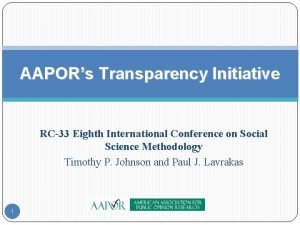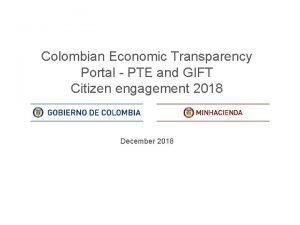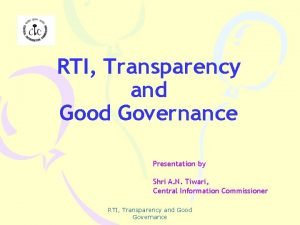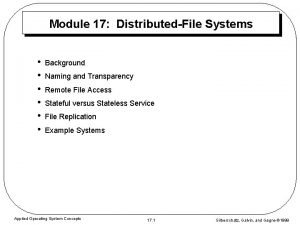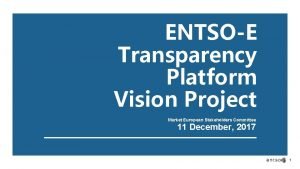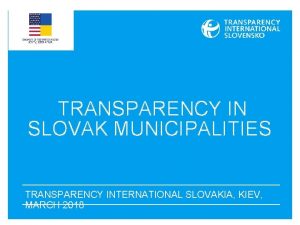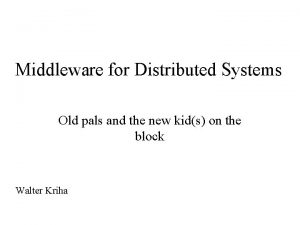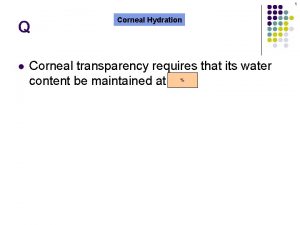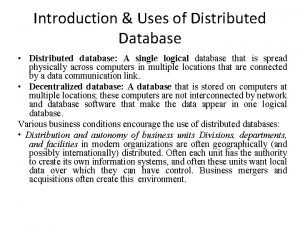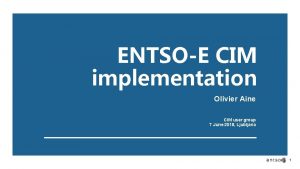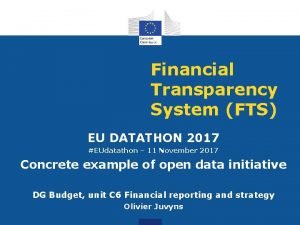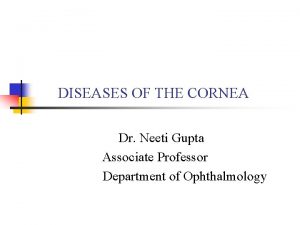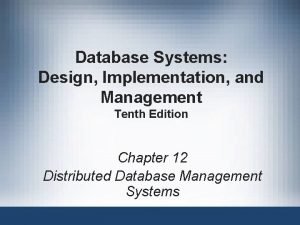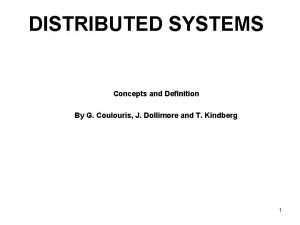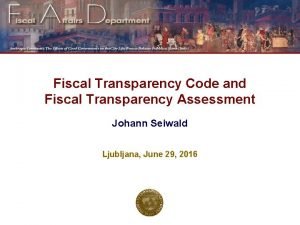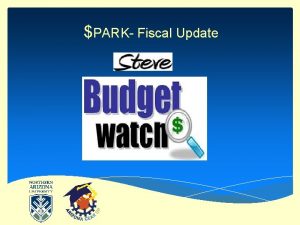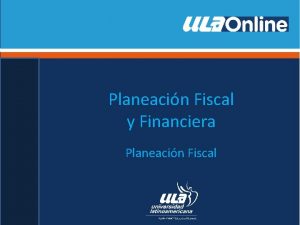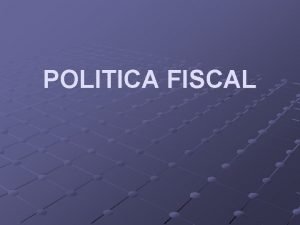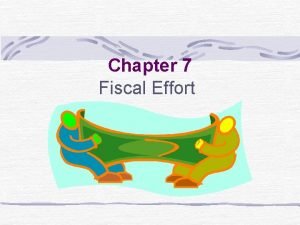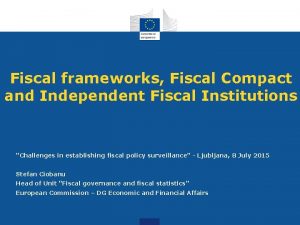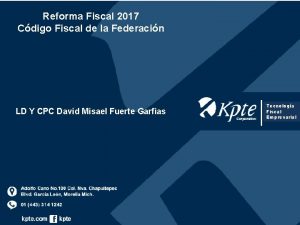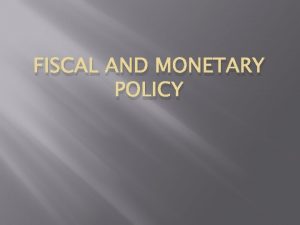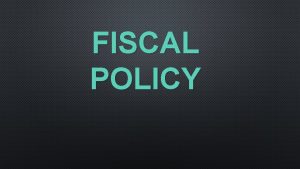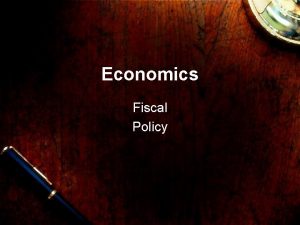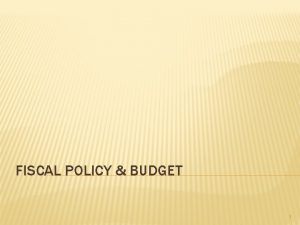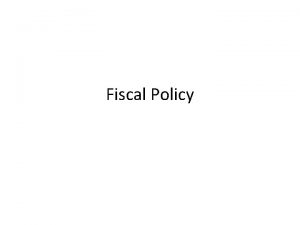Fiscal Transparency in Korea Joonook Choi Korea Institute




























- Slides: 28

Fiscal Transparency in Korea Joonook Choi Korea Institute of Public Finance 1

Fiscal Transparency 0. Background Realizing the Importance of transparency in the economic system during the 1990 s • Lack of transparency as causes of several problems • Preparing for Accession to OECD (1996) • Financial Crisis (1997) Realizing the importance of fiscal transparency <Internally> • Corruption • Inefficiency • etc. <Externally> • IMF code of good practices on fiscal transparency (1998) • OECD best practices for Budget Transparency(2001) 2

Fiscal Transparency Less emphasis on the issue of F/T At least compared to Turkey (? ) Special Ad hoc Committee on Fiscal Transparency and Public Finance in the context of 8 th Five year development plan in Turkey • Mentioned as one of the principles But not chosen as a major agenda for (fiscal )reform Major agendas for recent fiscal reform 1. 2. 3. MTEF Transition to top-down approach Performance-oriented budgeting • No extensive research on the issue in Korea - only some research projects : KIPF(2004) 3

Fiscal Transparency Why less emphasis on F/T in Korea? 1) Fiscal Reform is less important in Korea? - less emphasis on needs for fiscal reform since financial crisis in Korea was not caused by problems in the fiscal management 2) Korea has a high level of fiscal transparency? 3) F/T is not a very attractive reform agenda? - because the idea itself is vague? - because the outcome of reform may be less visible than outcome of other changes in the fiscal system 4

Fiscal Transparency Outline of the presentation • Problems in F/T in Korea – Assessment by IMF in 2001 • Rethinking the importance of F/T • Efforts to increase F/T in Korea – Focusing on the achievement since 1998 • Remaining Issues and Discussion 5

Fiscal Transparency I. Problems in F/T in Korea • Fiscal outcome in Korea looks very goods during the 1980 s and early 1990 s - very sound fiscal balance - low public debt • But there were hidden problems - roles of fiscal policy and financial policy - Inefficiency 6

Fiscal Transparency Assessment of fiscal transparency practices by IMF - In relation to the requirements of the IMF Code of Good Practices on Fiscal Transparency January 23, 2001 Korea meets international best practices in fiscal transparency in many areas. ……. . Despite these achievements, Korea falls short in some key areas of fiscal transparency. …. . 7

Fiscal Transparency u The staff’s commentary (summary) • The government should take the opportunity to reassess and more clearly define its fiscal role • Steps to affirm the universality of the budget as the principal instrument of fiscal policy and to improve the scope and coverage of budget documents • Significantly rationalizing the use of extrabudgetary funds and special accounts will be important in this regard. • Improve the reporting of fiscal information including information on public sector financial assets and liabilities, and the underlying methods and assumptions in forecasting. • Simplifying the tax system and improving taxpayer services. 8

Fiscal Transparency u Reassess and more clearly define its fiscal role by: • reducing public sector direct involvement in the corporate and financial sectors, cutting the subsidy component of the activities of the credit guarantee funds and allowing the corporate and financial sectors to be run purely on a commercial basis. • clearly distinguishing the BOK's monetary policy activities from the activities of the fiscal authorities. • conducting all intra-government lending on market-based terms. • reducing the current extensive recourse to lending from the budget at subsidized rate and the offering of loan guarantees for commercial purposes 9

Fiscal Transparency u Affirm the universality of the budget • significantly rationalizing the use of extrabudgetary funds and special accounts and integrating all fiscal activities into the state budget so that they are subject to the same scrutiny and prioritization of expenditures as other state budget entities. • moving away from frequent recourse to supplementary budgets as a tool of fiscal policy. • as part of the reduction in the use of extrabudgetary funds, the government should also move to eliminate the extensive use of earmarking, which complicates budgetary management and reduces budget accountability and transparency. 10

Fiscal Transparency u Improvements in the annual budget documents • the budget should include a more specific statement on objectives and should be cast in a form that facilitates ex post evaluation against measurable budget outcomes (rather than an evaluation based solely on financial compliance). • the budget documents should provide information that consolidates the general account of the central government with extrabudgetary funds and special accounts, i. e. , consolidated central government fiscal accounts • existing expenditure commitments should be clearly distinguished from new policies in the annual budget. 11

Fiscal Transparency • the medium-term economic framework should be enhanced with a more detailed projection of macroeconomic and fiscal aggregates, an explicit forecast of budgetary aggregates in the absence of policy action, and a description of policy actions that will need to be taken to achieve the government's medium term fiscal objectives; • the government should provide within the budget, and to the public, a statement and, insofar as is possible, a quantification of their quasifiscal activities. • the budget should report information on the structural or cyclically adjusted balances and consider, over the medium-term, providing information in budget documents on accrual-based and generational accounts. 12

Fiscal Transparency • the budget should contain a comprehensive identification and quantification of the major fiscal risks. • the budget should contain a report on government contingent liabilities as well as on potential future obligations the budget will be required to meet, such as the actuarial imbalances in the occupational pension schemes. • the government's ex post reconciliation between actual fiscal performance and the budget plan should highlight any changes to be made to budget forecasting methodology as a result of the analysis of past outturns 13

Fiscal Transparency u Improvements in the annual budget documents • improve the quality of information on local governments and reduce delays in the availability of data. • attempt to regularly publish consolidated information on its financial assets in order that the public can assess the net indebtedness of the public sector. • while information on government macroeconomic and fiscal projections are available to the public, working methods and assumptions underlying the fiscal forecasts should also be made available and should include a statement making it clear who has produced the forecasts. 14

Fiscal Transparency u Taxation system • significantly simplifying the tax system through the elimination of a number of taxes, reduction in the amount of earmarking, and a rationalization of tax reliefs, preferences, exemptions, and privileges • the government should continue to expand on its initiatives to improve taxpayer services which include providing tax forms and information on the tax service's website, expanding access to electronic filing and allowing for electronic payment of taxes, and providing greater counseling to taxpayers by telephone, over the internet, and in tax offices. 15

Fiscal Transparency II. Rethinking the importance of F/T (1) Financial crisis and Fiscal policy 1. The scope of fiscal transparency - OECD Best practices tend to focus on providing information - IMF code on good practices on fiscal transparency includes “clarity of roles and responsibilities” 1. Role of the government sector was not clearly set - government used the financial policy as a alternative to fiscal policy ⇒ problems in the financial sector => financial crisis 16

Fiscal Transparency • Core of fiscal transparency is revealing information, but final goal is attaining better fiscal outcome • Intermediate goal can be – control the government – control of the interest groups • The set of information or the structure of providing information can be different in each country – in spite of some universal characteristics – the areas in which F/T can be effective can differ in each country and priorities can also be different 17

Fiscal Transparency (2) All fundamental fiscal reform agendas are related to fiscal transparency • MTET without improving fiscal transparency may result in the increase in the fiscal expenditure • Top-down approach without improving fiscal transparency may result in low efficiency in fiscal expenditure • Performance management is not possible without improving fiscal expenditure 18

Fiscal Transparency (3) Changes in the economic/social/fiscal situation is making the F/T more important • Changes in the social structure - interest groups, NGOs (Participatory government) • Changes in the (economic and) fiscal situation - Increase in the needs for fiscal resources in some sectors - Efficiency in government expenditure is more important - Providing Justification for allocation of fiscal resources - Using F/T as a tool for balancing power among interest groups 19

Fiscal Transparency III. Achievements in Improving F/T There have been various efforts to improve F/T even though it was not chosen as a major reform agenda • Redefining the role of fiscal policy • As part of fiscal reform • As part of the public sector reform - Mandatory revelation of management information for quasi government units • Using IT (E-government) and providing information 20

Fiscal Transparency But progress was uneven and slow in some areas • Some progress in the process of fiscal management • Progress was slow - When interest groups are involved - When political compromises are necessary Substantial progress in providing information but there are criticism that • Whether providing information has any significant effects on the fiscal management • The quality of provided information is not high enough (e. g. consolidated budget) 21

Fiscal Transparency (1) Special Accounts and State Funds Assessment in 2001 : proliferation of extrabudgetary funds have obfuscated the limits of government activities. • The consolidated central government is made up of - 1 general account, - 5 public enterprise special accounts, - 18 other special accounts, - 43 extrabudgetary funds. • In addition, 18 funds, some of whose activities are of a fiscal nature, are excluded from the coverage of the consolidated central government and general government statistics. 22

Fiscal Transparency • Reducing the number of special accounts and state funds has been a classical issues in fiscal reform in Korea - continuous efforts, but no significant achievement - Current plan to reduce the number from 76 to 61 (government proposal announced in May, 2005) - Scope rather than the number is more important • More important change is the management system of extrabudgetary funds such as in 2003 - The control of budgeting authority and the National Assembly over state funds strengthened 23

Fiscal Transparency (2) Using IT in the Fiscal Management • Much interest in e-government since 2000 • NAFIS : - Budget Execution (payment), Settlement, Management of National Assets etc. - Fully in use since 2003, still in the process of upgrading - Directorate of Treasury in MOFE (Ministry of Finance and Economy) • FIMSYS : Budget Formulation - MPB (Ministry of Planning and Budget) • Two separate systems, Integration of or linking the two systems (problems due to government organization) 24

Fiscal Transparency (3) Scope of the Budget Consolidated budget in Korea is not comprehensive enough, it does not include • the budget of local governments ⇒ Technical problems in the accounting standards • Some public enterprises • National Health Insurance ⇒ Conceptual debate in the scope of the consolidated budget Very slow progress in • Redefining the scope of the consolidated budget • Providing statistics with international standard 25

Fiscal Transparency (4) Tax system • Significant Improvement in the tax administration - Fundamental changes in the organization of tax administration (National Tax Service) in 1999 - A decrease in the corruption in the tax administration - But there are criticism that tax administration is affected by political environment • But the changes in the tax system is slow - still many earmarked taxes - widespread tax reliefs in the agricultural sector in providing assistance to SMEs 26

Fiscal Transparency Evaluating the progress in the past years • Not chosen as a major reform agenda - less attractive as an agenda for fiscal reform - but related with many major issues in fiscal reform • Getting more important in the new environment • But there have been efforts in various respects • Progress has been slow in some areas 27

Fiscal Transparency Points of Further Discussion • F/T and other changes in the fiscal system • F/T and role of NGO or the press - utilization of information • F/T and Interest groups - Can F/T be used as a tool to control interest groups? • F/T and political stability - Under what political situation can improving FT be effective in enhancing the fiscal outcome? 28
 Transparency institute
Transparency institute Korea automobile testing & research institute
Korea automobile testing & research institute Korea institute of sport science
Korea institute of sport science Korea automobile testing & research institute
Korea automobile testing & research institute Aapor transparency initiative
Aapor transparency initiative Ocp transparency portal
Ocp transparency portal Transparency of good governance
Transparency of good governance Naming transparency
Naming transparency Linguistic transparency
Linguistic transparency Entso-e transparency platform
Entso-e transparency platform Transparency international slovakia
Transparency international slovakia Distributed systems middleware
Distributed systems middleware Corneal transparency
Corneal transparency Location transparency in distributed database
Location transparency in distributed database Surrealism transparency
Surrealism transparency Transparency in learning and teaching
Transparency in learning and teaching Urinary
Urinary Scaling transparency hides
Scaling transparency hides Entsoe cim
Entsoe cim Beyond science
Beyond science Financial transparency system
Financial transparency system Dislocation surrealism definition
Dislocation surrealism definition Social audit ap
Social audit ap Greenhill medical centre
Greenhill medical centre Pseudocornea
Pseudocornea Fragmentation transparency
Fragmentation transparency Distributed database transparency features
Distributed database transparency features Pay equity massachusetts
Pay equity massachusetts Distributed systems coulouris
Distributed systems coulouris




